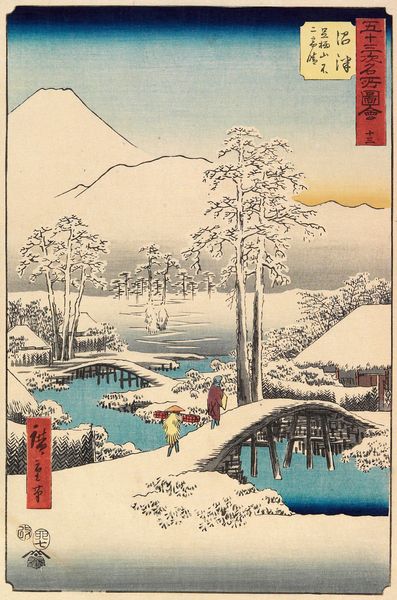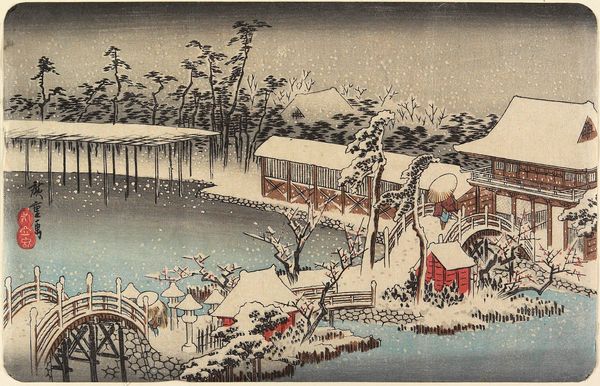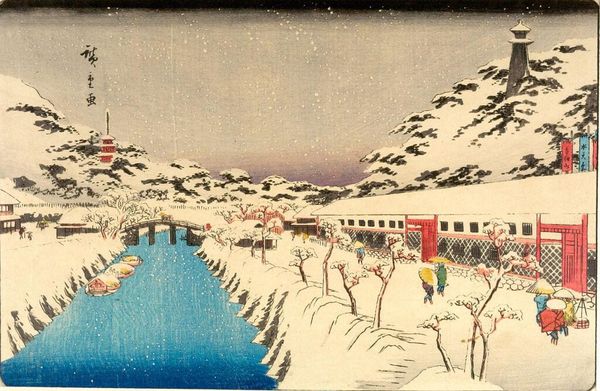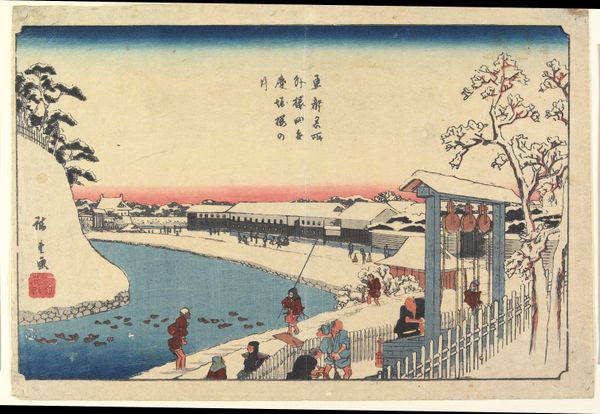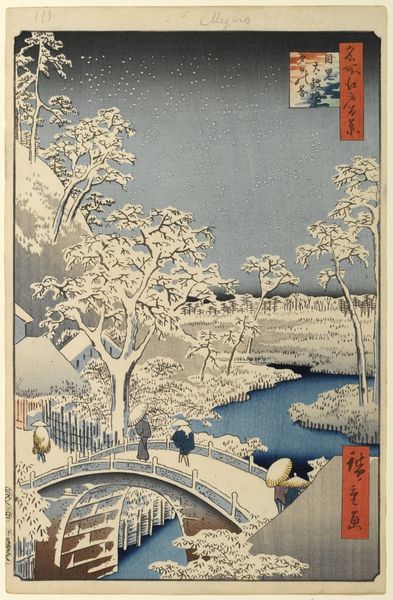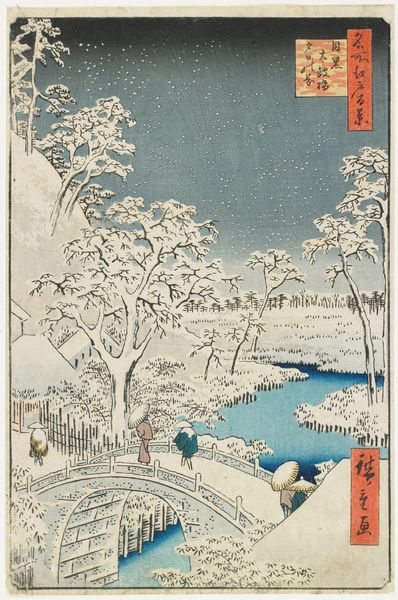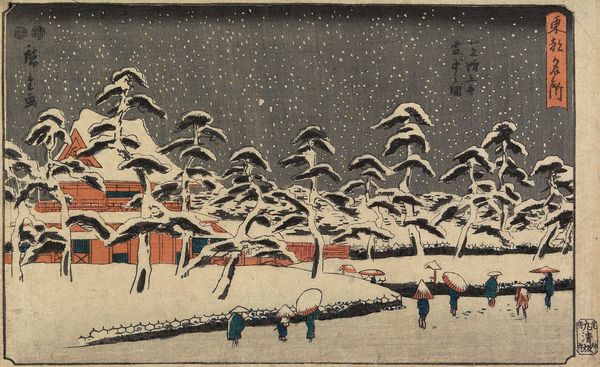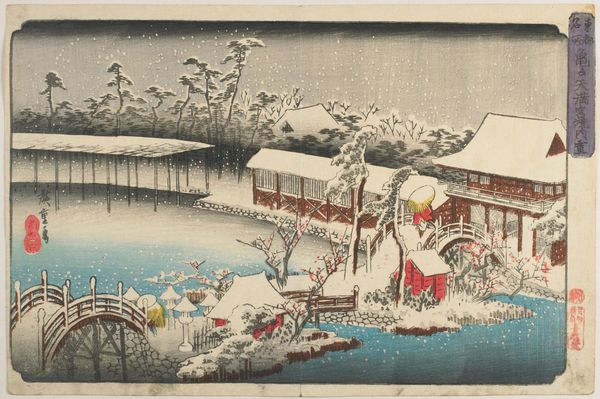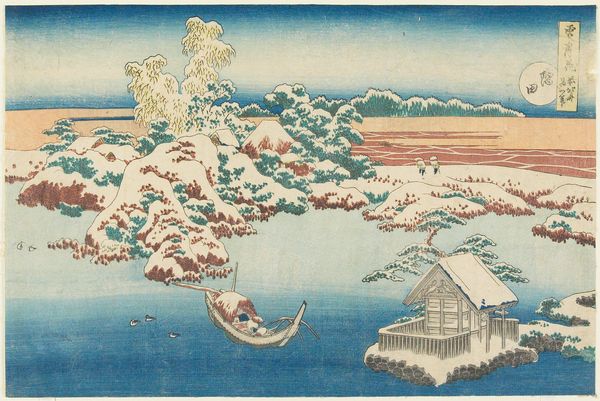
print, ink, woodblock-print
#
narrative-art
# print
#
landscape
#
ukiyo-e
#
ink
#
woodblock-print
Dimensions: 8 9/16 x 13 9/16 in. (21.8 x 34.5 cm) (image)9 11/16 x 14 1/2 in. (24.6 x 36.9 cm) (sheet)17 15/16 x 14 in. (45.5 x 35.5 cm) (mat)
Copyright: Public Domain
Curator: This captivating woodblock print, titled "No.Hodogaya", was created by Utagawa Hiroshige sometime between 1847 and 1852. The print, currently residing here at the Minneapolis Institute of Art, showcases a snow-covered landscape. Editor: Immediately, the cold starkness of the snow against that incredibly vivid blue river strikes me. There’s a near-geometric simplicity in the arrangement, those strong vertical lines of the bridge supports against the blanketed landscape. Curator: Indeed, the composition is remarkable. Note how Hiroshige masterfully uses a limited palette to evoke a sense of stillness and cold. The dominant verticality provides structure while the delicate gradation of the sky creates a recessive depth of space, punctuated only by the barest monochrome details. Editor: The bridge, of course, feels incredibly important here, doesn't it? The gentle arch suggests passage, transition even. In Japanese prints, bridges can often symbolize a crossing into another state, a shift in one’s life, connecting two realms, literally, one to the other. Notice how he includes figures crossing it, pilgrims of a sort. Curator: Fascinating. I’d add, structurally, it serves as the only diagonal in a field of right angles—drawing the viewer’s eye into the composition, offering a pathway across the flat pictorial field and an exercise in perspective. Consider how each element seems intentionally positioned: the lone boat at the water's edge, the distant mountain—forming an intricate network of horizontal and vertical planes that guide the eye. Editor: The presence of the boat in the lower corner seems loaded with symbolism; almost like Charon’s boat on the River Styx. Is it just an idle observation point, or is something else at play here? The smallness of human form suggests that our presence and our place here on Earth is ephemeral. Curator: Precisely. We often assume the narrative context of a print like this to define it entirely. However, focusing solely on narrative ignores the carefully orchestrated network of pictorial balances—the juxtaposition of form and color, for example—which elevate the artwork beyond a mere topographical illustration to something aesthetically resolute and conceptually compelling. Editor: It makes me think of journeys both literal and symbolic. It captures a moment suspended in time. Curator: An exemplary synthesis of pictorial construction and profound aesthetic simplicity!
Comments
No comments
Be the first to comment and join the conversation on the ultimate creative platform.
